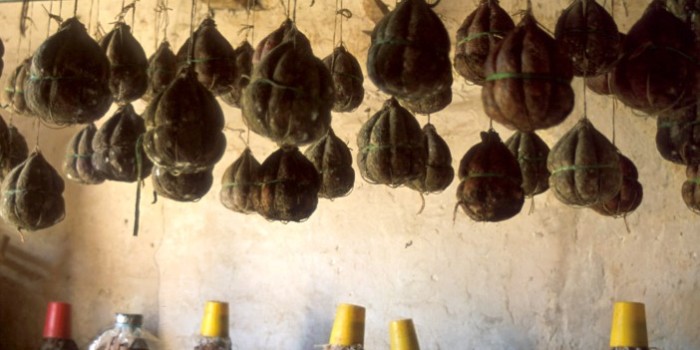Modern Ferrarese cuisine is strongly tied to the traditional Renaissance gastronomy of the Estense court, which is considered an excellence by culinary experts on this period.
Cristoforo da Messisbugo, who is considered to be the father of modern cookery, was employed in Ferrara.
Based on this premise, a rich and elaborate cuisine is to be expected, with recipes which not only make the most of know-how on local resources, but thanks to the Estense tradition, unusual ingredients, too. As in the case of Panpepato, Salama da Sugo or the Pasticcio Ferrarese.
Typical Ferrarese Dishes
Salama da Sugo is an intriguing and very special, flavourful cooked salami based on selected, finely and roughly minced pork, red wine, salt, black pepper, nutmeg, cinnamon and cloves. The origins of Salama da Sugo go back to the fifteenth century, with the first written evidence of its existence being provided by Lorenzo il Magnifico.
The Pasticcio Ferrarese is a sweet short-crust pastry dish filled with maccheroni in a white meat ragù, béchamel, nutmeg and truffle sauce.
The Ferrarese version of Panpepato came into being in the 1600s in the Corpus Domini Monastery from a recipe by the cook, Cristoforo da Messisbugo. It is a dessert which is made into a flattish-dome shape prepared with almonds, spices, candied fruit, hazelnuts and covered in dark chocolate. The name comes from a shortened version of the words Pan del Papa (the Pope’s bread) which over time became Panpapato and in the end Panpepato.
The Ferrarese Coppia is bread with a rather unusual shape with four horns branching out from its centre. This bread is unparalleled when eaten with renowned Ferrarese cured meats.
Another very special, characteristic dish from Ferrarese cuisine are the so-called Cappellacci di Zucca (pumpkin cappellacci). These are egg-pasta ravioli stuffed with pumpkin.



Comments are closed.